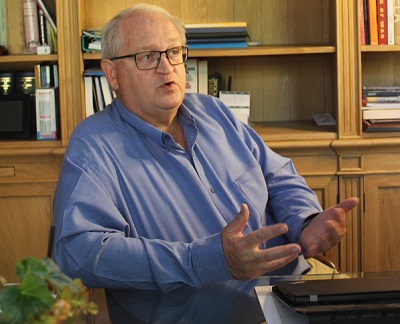

Director: ReVive Advisory & Turnaround
December has arrived! The profession is eagerly transitioning from balance sheets and creditor meetings to braaing, gammons and festive gatherings with friends and families. Let’s hope the arguments and debates at these gatherings won’t mirror those of creditor meetings!
Over the past few weeks, we have been focusing on the principles provided by the International Association of Restructuring, Insolvency & Bankruptcy Professionals (INSOL) that govern informal workouts. Today, we end this series by focusing on the seventh and eighth principles.
Seventh principle
Insol points out that information obtained for the purposes of the process concerning the assets, liabilities and business of the debtor and any proposals for resolving its difficulties should be made available to all relevant creditors and should, unless already publicly available, be treated as confidential.
Confidential Information; it is preferable that during the rescue process all relevant creditors are provided with the same information regarding the assets, liabilities and business of the debtor and see all the proposals put by the debtor. This should be so even where differing proposals are being put to differing constituencies within the relevant creditor group as a whole and even if differences in the position between the relevant creditors mean that separate professional advice is required for separate constituencies.
Where relevant creditor groups include creditors who either are not subject to express or implied duties of confidence or cannot accept confidential information without prejudicing their ability to trade debt (which in the case of debt traders and many bondholders, will be unacceptable except for relatively short and defined periods), the position can be more complicated and special arrangements will need to be made. For example if the Company and its debt is listed.
The confidential information is often evaluated either by an ad hoc group formed from creditors who are prepared to be restricted from trading or by the co-ordination committee and in each case by professionals acting for them (such as their legal advisers) until proposals have been fully formulated.
It is either possible to publish the information or for the information to be passed to the intended recipient because it will be published within an agreed period whether or not the rescue proposal is approved. By this method, the confidential and price-sensitive information is “cleansed” in the sense that publication will enable debt traders or professional bondholders then to trade the debt, which they were not able to do while they held confidential information which was not available to the rest of the market.
Insol points out that, in all cases, it is recommended that a formal confidentiality agreement be entered into by each relevant creditor.

Image By: Canva
This process can be time consuming and require negotiation. Creditors will naturally use the information to seek to improve their position. In SA the maturation of a general Notarial Bond is ongoing in a informal work out. Unless specifically suspended by the BR the maturation also is likely to continue in a Business Rescue.
Eighth principle
If additional funding is provided during the Standstill Period or under any rescue or restructuring proposals, the repayment of such additional funding should, so far as practicable, be accorded priority status as compared to other indebtedness or claims of relevant creditors.
This is post commencement funding and without available security with the appropriate ranking it may be difficult for other creditors to agree to back rank their claims if it worsens their positions in an Insolvency.
Insol points out that if additional funding is provided: During the Standstill Period and/or in the immediate aftermath of any rescue or restructuring, additional funding (often referred to as “New Money”) is often required.
While other ways may be found of providing such funding or easing the debtor’s financial pressures (e.g., releasing asset disposal proceeds), New Money may also be necessary to enable the debtor to overcome a temporary shortfall. The relevant creditors will normally wish to be satisfied both that any New Money funding is genuinely necessary and that repayment is adequately provided for. They may, therefore, be reluctant to see New Money funding of material amounts in advance of some assurance about the debtor’s financial position.
The current Wescoal dispute is a good example of the pitfalls on PCF security and voting rights.
As noted in the commentary on the Second Principle, the standstill arrangements are intended to preserve the relative position of relevant creditors as between themselves. The benchmark for comparison will be the position as at the Standstill Commencement Date. Where a debtor requires New Money funding, relevant creditors will be concerned that such New Money will, so far as practicable, be given priority of repayment compared with other debts in the event of the debtor’s failure and insolvency.
Insol adds that the simplest method of ensuring the priority of repayment for New Money is usually by obtaining security for its repayment over assets of the requisite value. In some cases, however, negative pledges in favour of third parties or other legal complications will either prevent the granting of security for New Money or render the benefit which will result from such security uncertain. While there are various techniques for ameliorating such problems (e.g. asset purchase arrangements, placing assets into newly formed and “ring-fenced” borrowing entities and sale and leaseback arrangements) in some cases relevant creditors will have no option but to fall back on loss-sharing arrangements between themselves designed to ensure that the New Money will be accorded priority of repayment status (e.g. by agreeing to “pool” recoveries from any insolvency of the debtor and to apply them in repayment of the New Money first or, in certain jurisdictions, by the use of subordination agreements).
Identifying New Money is, as indicated in the commentary on the Second Principle, not limited simply to the provision of additional loan facilities. It can also apply to other forms of increase in exposure levels (e.g. under derivative or contingent facilities) when compared to the position as at the Standstill Commencement Date. The treatment of such increased exposure levels will be a matter of commercial negotiation among the relevant creditors.
The provision of New Money (including increases in exposure, which are to receive New Money treatment) can impact the position of relevant creditors. This is because its priority treatment may affect the prospects of other non-prioritised debt being repaid.
Insol points out that, ideally, where appropriate, all relevant creditors participating in the process should be given the opportunity to participate in the provision of, and should accept the risks associated with, the provision of New Money on a proportionate basis (i.e. proportionally to the perceived exposures which each of them has to the debtor as at the Standstill Commencement Date). Banks and other financial institutions may be able to provide New Money funding directly (either on a bilateral or syndicated basis), but other relevant creditors may only be able to underwrite such New Money exposures, and some only to a limited degree.
Some relevant creditors may not be able to agree to any increase in their overall exposure and will only be able to support the provision of New Money either by subordinating their existing debt to its repayment (this technique may not work in all jurisdictions) or by agreeing to share dividends or other recoveries so as to give the New Money priority of repayment (i.e. a form of loss-sharing provision).

Image By: Canva
Insol adds that the basis on which benefits associated with the provision of New Money will fall to be shared between relevant creditors where only some of them are able to provide the New Money lending to the debtor directly will be the subject of commercial negotiation between the relevant creditors.
New Money lending will generally be provided on the same basis as demand or cancellation as other facilities (e.g. such demand may only be made during the Standstill Period with the agreement of a majority of the relevant creditors). In many jurisdictions, however, a lender of New Money (or indeed a provider under any other facilities) should not be obliged to lend further amounts after a petition for liquidation o has been lodged against the debtor…”
A shift for the better?
There is a growing sentiment in the profession that there is a shift away from business rescues and liquidations towards restructuring and informal workouts. This was all but confirmed at the recently held SARIPA Conference. Creditors and affected parties are apparently driving this shift, as they feel that they will receive better value out of the latter mechanisms than the former.
This is perception and not reality.
While business rescue is a last resort, it should never be a secondary mechanism because the tools and structures offered by restructuring and informal workouts are already present in business rescue, with the significant exception that creditors and affected parties will have increased legal backing in business rescue.
The Rescue Framework is a more equitable regime than an informal workout. The requirement of a legally bonding standstill agreement between creditors is seldom achieved. SARS would find it almost impossible to agree and all trade creditors would be prejudiced. Often the only recourse they have is to move to a Cash on delivery system.
The voices of creditors and affected parties cannot fall on deaf ears, and their desire for increased value is a well-taken point. However, their objections and tentativeness towards business rescue are rooted in the fact that companies in South Africa wait until they are neck-deep in financial distress before they seek help.
The difficulties in Business Rescue do lie in some elements of an imperfectly drafted Act and poor legal reasoning in some judgements and castration of some of the more aggressive cram down provisions.
The largest reason for the failure lies in the Board decision to seek Business Rescue in the first place. Hopefully we will see more in depth analysis of these decisions in litigation in future. The Board duties in seeking Business Rescue will receive some further discussion in 2025.
We are keen to have Chief Restructuring Officers put in place. However, when and how this shift occurs is important as well as assessing whether it is the best solution. Often in a group reorganisation this makes sense; in operations, this is the role of the practitioner and the management team, a more inclusive and stable process than adding heads in suits.
In our first article of 2025, we will do a shot out between the Insol principals and the provisions of Chapter 6. In writing this series of articles I have revised my own opinion about the imminent demise of Business Rescue. We have a world class tool that needs refining not relegation.
The Revive Team looks forward to the opportunity next year to introduce “Perspicacity” TM ©.





Be the first to comment